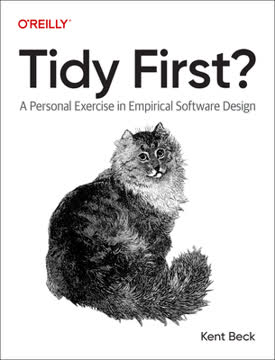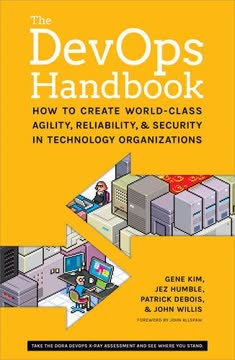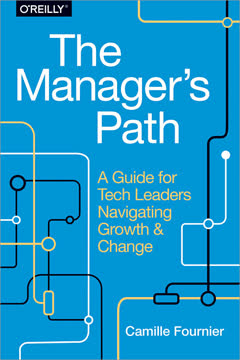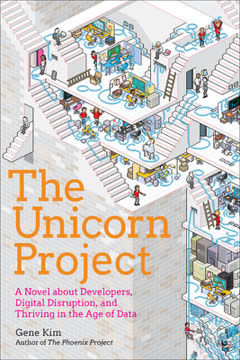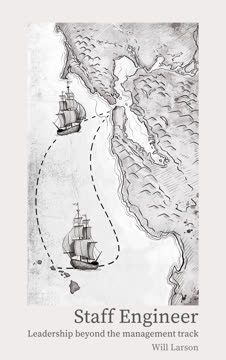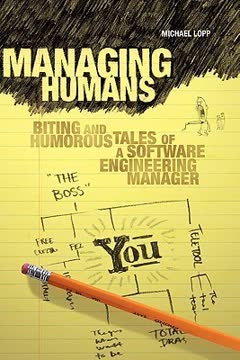つの重要なポイント
1. 人間の癖と動機を理解して管理の技術をマスターする
「1対1のミーティングでは、最も小さな声にも耳を傾ける機会を与えることが重要です。私はまず『調子はどう?』と質問することから始めます。」
チームを理解する。 マネージャーとしての主な責任は、チームの個々のメンバーを理解し、サポートすることです。これには、彼らの独自の性格、仕事のスタイル、動機を認識することが含まれます。定期的な1対1のミーティングは、関係を築き、洞察を得るために不可欠です。
アプローチを調整する。 チームメンバーごとに異なる管理スタイルが必要です。自律性を重視する人もいれば、より多くの指導を必要とする人もいます。各人のニーズを理解することで、リーダーシップのアプローチを調整し、彼らの潜在能力と仕事の満足度を最大化できます。
心理的安全性を育む。 チームメンバーが自分の考え、懸念、アイデアを自由に共有できる環境を作りましょう。このオープンな環境は、問題解決、イノベーション、全体的なチームパフォーマンスの向上につながります。
2. オープンなコミュニケーションと信頼の文化を育て、高性能なチームを構築する
「彼らがあなたを信頼しなければ、何も言わないでしょう。だから、聞くこともできません。」
透明性を通じて信頼を築く。 会社の目標、課題、意思決定プロセスについてオープンにすることが重要です。情報を自由に共有し、チームにも同じことを奨励しましょう。この透明性は信頼を築き、チームメンバーが会社の成功に投資していると感じさせます。
多様な視点を奨励する。 チーム内の異なる視点を積極的に求め、価値を見出しましょう。この多様な考え方は、より良い問題解決とイノベーションをもたらします。すべてのチームメンバーが自分のアイデアや意見を貢献できる機会を作りましょう。
建設的に対立を解決する。 意見の相違が生じた場合は、迅速かつプロフェッショナルに対処しましょう。対立をコミュニケーションの改善やチーム内の関係強化の機会として活用します。
3. ソフトウェア開発の混沌を受け入れつつ、構造を維持する
「プロセスは、測定する人と創造する人の間に美味しい、健康的な緊張を生み出します。」
柔軟性と構造のバランスを取る。 ソフトウェア開発は本質的に混沌としていますが、生産性のためには構造が必要です。創造性や機敏さを損なわない軽量なプロセスを導入しましょう。
変化する状況に適応する。 プロジェクトが進化し、新たな課題が発生する際には、アプローチを調整する準備をしましょう。チームが変化に対して適応力と回復力を持つよう奨励します。
継続的な改善の文化を育む。 プロセスを定期的に見直し、改善を図りましょう。チームメンバーからの意見を求め、成功と失敗の両方から学ぶことを奨励します。
4. エンジニアリングチーム内の異なる性格タイプを認識し、育成する
「良いレフェリーは、会議が予定された議題から外れているが、部屋の全員が進展の非言語的なサインを示しているとき、それを見極めることができる。」
主要な性格タイプを特定する。 以下のような一般的なエンジニアの性格を認識しましょう:
- 完璧主義者:完璧なコードを追求するが、締め切りに苦労することがある
- イノベーター:創造的な解決策を生み出すが、既存のプロセスに抵抗することがある
- ワークホース:タスクを確実に完了するが、イニシアチブに欠けることがある
強みを活かし、弱点を補う。 各チームメンバーの強みに合ったタスクや役割を割り当てましょう。個々の弱点を克服するためのサポートと指導を提供します。
多様な性格の協力を促進する。 異なる性格タイプ間のチームワークを奨励し、創造性とバランスを育みます。チーム内での知識共有やメンタリングの機会を作りましょう。
5. 戦略的な手腕で組織の政治と変化を乗り切る
「再編成は会社全体に影響を与えます。全員が意見を持っており、それはあなたが慣れていない規模の集団思考を意味します。」
政治的な風景を理解する。 組織内の主要な利害関係者、意思決定者、影響力のある人物を特定しましょう。チームの目標やイニシアチブをサポートするために関係を築き、同盟を結びます。
変化の際に効果的にコミュニケーションする。 再編成やその他の大きな変化の際には、チームに対して明確で一貫したコミュニケーションを提供します。懸念に迅速かつ誠実に対処し、変化のポジティブな側面に焦点を当てます。
変革の推進者になる。 自分とチームを組織の変革に貢献する価値ある存在として位置づけましょう。改善の機会を積極的に見つけ、よく考えられた提案をリーダーシップに提示します。
6. 成長とイノベーションを促進する学習環境を育む
「システム思考者としてのオタクという点は、『Nerd Handbook』を書いたときから主張しており、『Being Geek』(O'Reilly, 2010)でもさらに探求しています。」
継続的な学習を促進する。 チームが新しい技術や業界のトレンドに遅れないように奨励します。トレーニング、会議、メンタープログラムなど、専門的な成長のためのリソースと機会を提供します。
実験の文化を育む。 チームメンバーが新しいアイデアやアプローチを探求するためのスペースを作りましょう。リスクをコントロールしながら挑戦することを奨励し、失敗を後退ではなく学習の機会と見なします。
イノベーションを認識し、報奨する。 チーム内の創造的な解決策や革新的な考え方を称賛します。新しいアイデアを共有し評価するシステムを実装し、有望なイニシアチブをサポートします。
7. 効果的なリーダーシップのために技術的専門知識と人材管理スキルのバランスを取る
「マネージャーとしてのあなたの仕事は、彼の明らかな欠点を強みに変えることです。最適な人材を見つけ、その人に仕事を任せることです。」
技術的な熟練度を維持する。 チームとの技術的な議論や意思決定に関与し続け、信頼性を保ちます。自分自身の技術スキルを定期的に更新し、チームが直面する課題を理解します。
強力な人材管理スキルを開発する。 感情的知性、コミュニケーション、紛争解決能力の向上に焦点を当てます。これらのソフトスキルは、チームを効果的にリードし、動機付けるために重要です。
委任と権限付与。 重要なタスクや意思決定をチームメンバーに信頼して任せます。指導とサポートを提供しつつ、マイクロマネジメントを避けます。このアプローチにより、上位レベルのリーダーシップ責任に集中しながら、チームのスキルと自信を育成します。
8. 創造性と生産性を損なわずに効果的なプロセスを実装する
「彼らの実験の曖昧さを受け入れましょう。魅力的なプロジェクトに取り組むことを許可することは、ゲームの半分に過ぎません。」
軽量なプロセスを設計する。 構造とガイダンスを提供しつつ、負担にならないプロセスを作りましょう。効率と品質を向上させるための重要な要素に焦点を当てます。
定期的に見直し、改善する。 プロセスが効果的で関連性を保っているかどうかを継続的に評価します。チームからの意見を求め、目的を果たさなくなったプロセスを適応または廃止することをいといません。
柔軟性を持たせる。 プロジェクトやチームメンバーによってプロセスのバリエーションが必要な場合があることを認識します。独自の状況や創造的な問題解決に対応するためにアプローチを調整することにオープンでありましょう。
9. 危機や困難な状況に冷静かつ決断力を持って対処する
「空が落ちてくるとき、みんなが見ています。みんなが1時間前にステータスを知りたがっています。」
プレッシャー下で冷静さを保つ。 あなたの態度がチームのトーンを設定します。高ストレスの状況でも、冷静で自信に満ちた態度を維持しましょう。
迅速に情報を収集する。 関連する事実や視点を収集して状況を評価します。不完全な情報に基づいて性急な決定を下すことを避けます。
決断力を持って行動する。 問題を明確に理解したら、それに対処するために決断力を持って行動します。計画をチームや利害関係者に明確に伝え、進捗状況を定期的に更新します。
10. 常に新しい挑戦と機会を求めて戦略的にキャリアを発展させる
「あなたのオタクが革命的なものを作り上げるためには、彼らが『セカンドハイ』を追い求めることが必要です。」
明確なキャリア目標を設定する。 長期的なキャリアの願望を定義し、それを達成するための計画を立てます。興味や状況が変わるにつれて、目標を定期的に再評価し、調整します。
多様な経験を求める。 スキルセットと視点を広げる新しい挑戦や責任を引き受けましょう。これには、組織内での横移動やクロスファンクショナルなプロジェクトが含まれることがあります。
強力なプロフェッショナルネットワークを構築する。 同僚、メンター、業界の仲間との関係を育みます。これらのつながりは、キャリア全体で貴重な洞察、サポート、機会を提供します。
最終更新日:
FAQ
What's Managing Humans about?
- Focus on Management: Managing Humans by Michael Lopp delves into the complexities of managing software engineering teams, blending humor with real-life experiences to offer leadership insights.
- Semi-Fictional Stories: The book uses narratives inspired by Lopp's experiences at companies like Apple and Pinterest, illustrating management concepts through relatable characters and situations.
- Human-Centric Approach: Lopp stresses the importance of understanding and connecting with team members, emphasizing that successful management involves addressing the unique needs of individuals.
Why should I read Managing Humans?
- Practical Insights: The book provides actionable advice for both new and experienced managers, aiding them in navigating the challenges of leading technical teams.
- Engaging Style: Lopp's humorous and candid writing style makes complex management concepts accessible and enjoyable to read.
- Real-World Applications: Readers can apply lessons from Lopp's experiences to their own management practices, enhancing team dynamics and productivity.
What are the key takeaways of Managing Humans?
- Connection is Key: Great managers must connect with their team members to understand their motivations and needs.
- Embrace Complexity: Lopp encourages managers to embrace the chaotic nature of human interactions and to be flexible in their approaches.
- Communication Matters: Effective communication is crucial for successful management, with strategies provided for improving clarity and understanding within teams.
What are the best quotes from Managing Humans and what do they mean?
- "You must see the people who work with you.": Highlights the importance of recognizing and understanding individual team members to foster a supportive work environment.
- "Better is the enemy of done.": Warns against perfectionism, suggesting that striving for perfection can hinder progress and completion of projects.
- "Management is chess.": Compares management to chess, indicating that it requires strategic thinking and foresight to navigate complex organizational dynamics.
What is the "Rands Test" in Managing Humans?
- Assessment Tool: The Rands Test is a set of 11 questions designed to evaluate the health of a team and the effectiveness of communication within it.
- Focus on Clarity: Questions address whether team members have regular one-on-ones, understand company strategy, and feel comfortable expressing their thoughts.
- Actionable Insights: By answering these questions, managers can identify areas for improvement in team dynamics and communication practices.
How does Lopp define "Stables" and "Volatiles" in Managing Humans?
- Stables: Team members who prefer structure, process, and predictability, contributing to a stable work environment.
- Volatiles: Thrive on risk and disruption, often challenging the status quo and pushing for innovation, which can lead to conflict with Stables.
- Balancing Act: Both types are essential for a healthy team dynamic, and managers should encourage a balance between stability and innovation.
What is the significance of "The Hotel Giraffe" metaphor in Managing Humans?
- Unexpected Situations: Illustrates the absurdity of unexpected challenges in management, emphasizing the need for adaptability.
- Self-Reflection: Encourages managers to reflect on their stress levels and how they handle unexpected challenges.
- Awareness of Stress: The giraffe symbolizes the importance of recognizing when stress affects performance and addressing it proactively.
What does Lopp mean by "Management via Worry and Crisis"?
- Worry Management: Refers to managers who react to potential problems with excessive concern, leading to unproductive meetings.
- Crisis Management: Describes managers who thrive in crisis situations, using them to demonstrate their value, but warns against relying solely on crises for motivation.
- Balanced Approach: Advocates for a balanced approach where managers can be proactive rather than reactive, fostering a healthier work environment.
How does Lopp suggest handling "Information Starvation"?
- Information Conduit: Managers should act as conduits for information, ensuring team members receive necessary updates and context.
- Preventing Rumors: Open communication prevents the spread of rumors and misinformation arising from a lack of clarity.
- Regular Check-Ins: Emphasizes the importance of regular check-ins and updates to keep the team informed and engaged.
What is the "soak" method in Managing Humans?
- Definition of Soaking: Involves allowing your mind to ponder a problem over time, rather than rushing to a solution, leading to more creative outcomes.
- Active and Passive Soaking: Active soaking involves gathering information, while passive soaking lets your mind wander and make connections.
- Encouraging Original Thought: Aims to foster original thought and strategic decision-making by transforming emotional reactions into well-considered responses.
What is the "Nerd Attention Deficiency Disorder" (NADD) in Managing Humans?
- Definition of NADD: A humorous term describing the tendency of nerds to juggle multiple tasks and distractions simultaneously.
- Characteristics of NADD: Individuals thrive on rapid-fire content and multitasking, which can lead to both productivity and chaos.
- Managing NADD: Emphasizes creating environments that allow for focused work and occasional chaos, supporting team members effectively.
What are "incrementalists" and "completionists" in Managing Humans?
- Incrementalists: Focus on making steady progress and achieving short-term goals, prioritizing getting things done over perfection.
- Completionists: Strive for perfection and long-term solutions, driven by the desire to do things right, resisting quick fixes.
- Balancing Both Types: Having both types on a team leads to more effective problem-solving and innovation when managed well.
レビュー
本書『Managing Humans』は賛否両論の評価を受けており、平均評価は3.93/5である。読者はソフトウェアエンジニアの管理に関する洞察に満ちたアドバイスと、エンターテイニングな文体を高く評価している。多くの人々が新任マネージャーにとって有益であり、技術分野にいる人々にとって共感できる内容だと感じている。しかし、一部の読者はステレオタイプに依存している点や、時代遅れの視点を批判している。本書の構成はブログ投稿の集まりとして読みやすいと称賛される一方で、一貫性の欠如が指摘されている。シリコンバレー以外や非ステレオタイプのエンジニアにはあまり適用できないと感じる読者もいるが、一部の読者は本書を強く推奨している。
Similar Books

